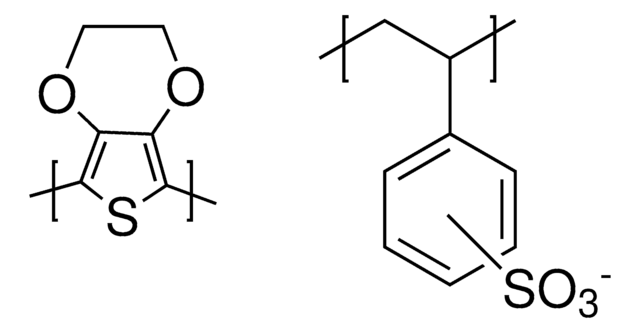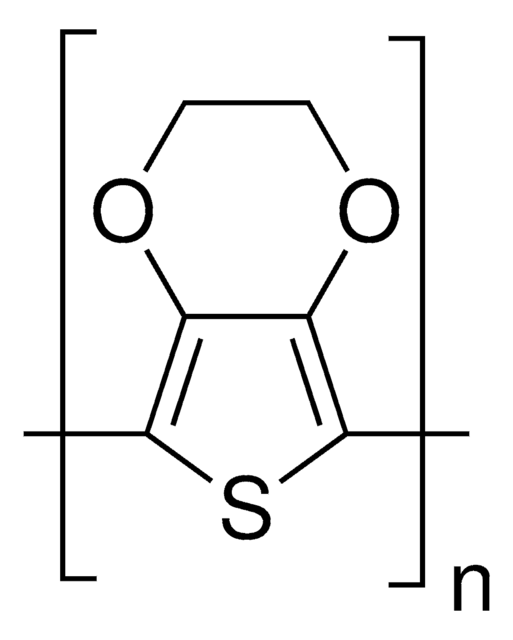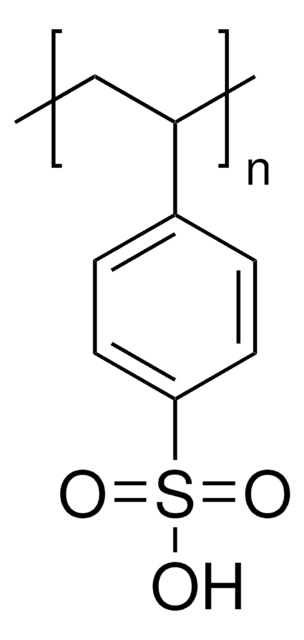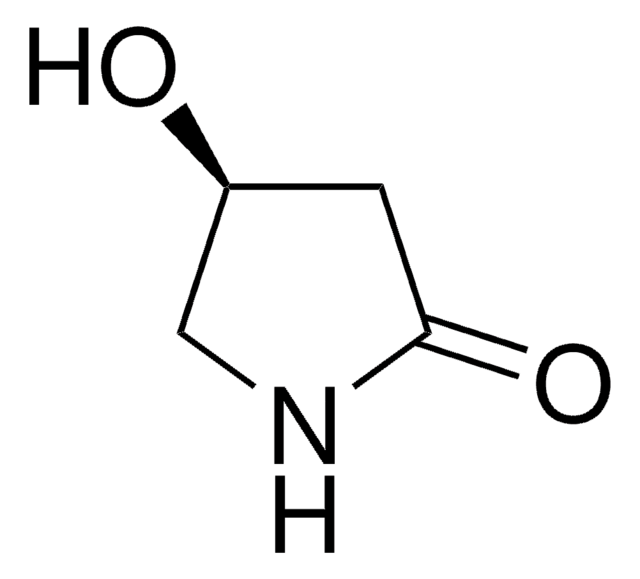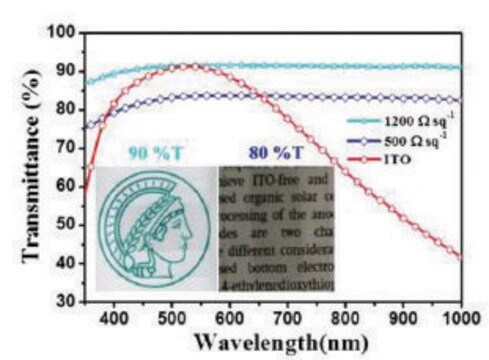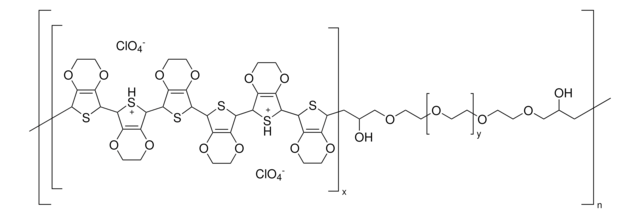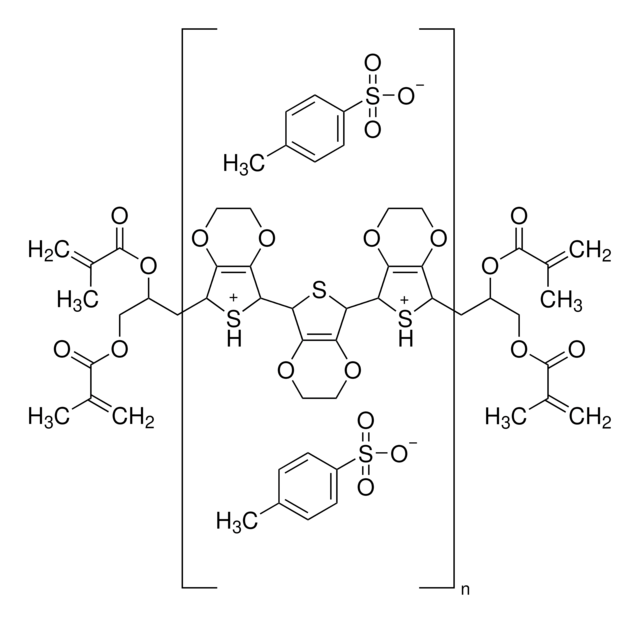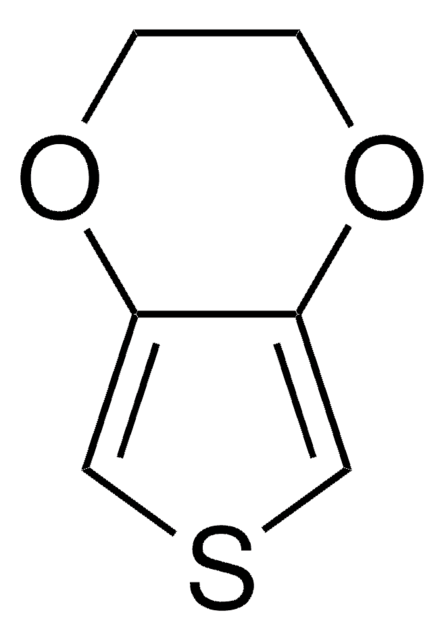Kluczowe dokumenty
483095
PEDOT:PSS
conductive grade, 1.3 wt. % aqueous dispersion
Synonim(y):
PEDOT:PSS, Poly(2,3-dihydrothieno-1,4-dioxin)-poly(styrenesulfonate)
About This Item
Polecane produkty
Nazwa produktu
Poly(3,4-ethylenedioxythiophene)-poly(styrenesulfonate), 1.3 wt % dispersion in H2O, conductive grade
klasa czystości
conductive grade
skład
PEDOT content, 0.5 wt. %
PSS content, 0.8 wt. %
charakterystyka ekologicznej alternatywy
Design for Energy Efficiency
Learn more about the Principles of Green Chemistry.
sustainability
Greener Alternative Product
stężenie
1.3 wt % dispersion in H2O
pasmo wzbronione
1.6 eV
przewodność
1 S/cm
kategoria ekologicznej alternatywy
temp. przechowywania
2-8°C
Szukasz podobnych produktów? Odwiedź Przewodnik dotyczący porównywania produktów
Opis ogólny
Zastosowanie
Cechy i korzyści
Opakowanie
Hasło ostrzegawcze
Danger
Zwroty wskazujące rodzaj zagrożenia
Zwroty wskazujące środki ostrożności
Klasyfikacja zagrożeń
Eye Dam. 1 - Skin Corr. 1
Klasa zagrożenia wodnego (WGK)
WGK 2
Środki ochrony indywidualnej
Faceshields, Gloves, Goggles, type ABEK (EN14387) respirator filter
Wybierz jedną z najnowszych wersji:
Masz już ten produkt?
Dokumenty związane z niedawno zakupionymi produktami zostały zamieszczone w Bibliotece dokumentów.
Klienci oglądali również te produkty
Produkty
Samouczek Sigma-Aldrich na temat nanopatterningu litograficznego objaśnia wzorowanie warstw przewodników, półprzewodników i dielektryków na powierzchniach.
Tutorial Lithography Nanopatterning at Sigma-Aldrich. Lithography, based on traditional ink-printing techniques, is a process for patterning various layers, such as conductors, semiconductors, or dielectrics, on a surface.
New conducting and semiconducting polymers for plastic electronics
Find advantages of inorganic interface layer inks for organic electronic & other applications.
Nasz zespół naukowców ma doświadczenie we wszystkich obszarach badań, w tym w naukach przyrodniczych, materiałoznawstwie, syntezie chemicznej, chromatografii, analityce i wielu innych dziedzinach.
Skontaktuj się z zespołem ds. pomocy technicznej
